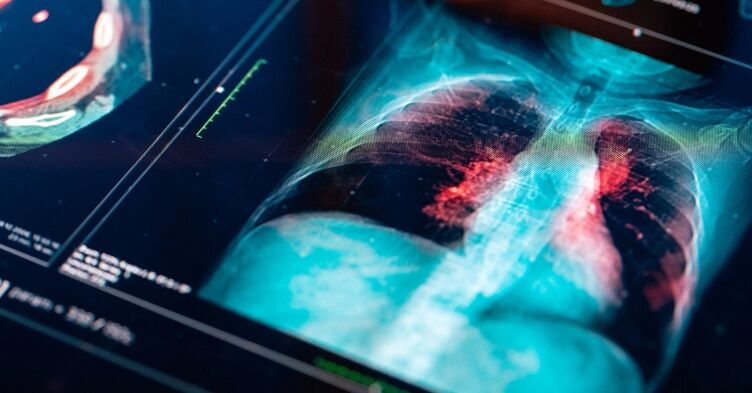GP with an interest in women’s health, Dr Toni Hazell outlines the key updates to NICE menopause guidance and advises on how nurses in primary care should interpret the recommendations
The risks and benefits of HRT continue to be a hot topic, and this forms a key focus of the recent update to the NICE guidelines on menopause.
The guidance comes with a discussion aid, giving visual representations of some of the risks and benefits of HRT.
The menopause affects those of the female sex, whatever their identified gender; this includes trans men and some non-binary people.
Key updates fall into three areas:
- Cognitive behavioural therapy (CBT) to manage menopause-associated symptoms.
- Management of genitourinary syndrome of the menopause (GSM), also known as vulvovaginal atrophy, urogenital atrophy or atrophic vaginitis.
- The effects of HRT on outcomes including cardiovascular disease, dementia, life expectancy and cancer of the breast, endometrium and ovary.
The use of CBT
This was controversial when the draft guideline came out, with suggestions that CBT would be considered equally with HRT for treatment of the menopause.
The final update recommends that menopause-specific CBT be considered for vasomotor symptoms (VMS), poor sleep and depressive symptoms in addition to HRT, or when HRT is contraindicated or not wanted. CBT’s use for anxiety, low mood, VMS, stress and poor sleep are well established, so this is unlikely to hugely change practice; it may improve availability of CBT for the menopause programmes.
Management of GSM
GSM affects the vulva, vagina, bladder and urethra. Symptoms may occur years after the menopause; presentation may therefore be with a suspicion of recurrent urine infections, rather than immediately being linked to menopause in the woman’s mind. It is caused by a mucosal thinning and reduction in glycogen and lactobacilli, due to oestrogen deficiency, and is likely to affect most post-menopausal women. Other presentations include presumed ‘thrush’ (although symptomatic vulvovaginal candidiasis is actually rare in this age group), vaginal dryness, vulval itching/burning and dyspareunia.
NICE recommendations which echo current practice include the following (for women with no history of breast cancer):
- Offer vaginal oestrogen, alone, or in combination with systemic HRT and/or non-hormonal moisturisers and lubricants; the latter can be used alone where vaginal oestrogen is contraindicated, or not wanted.
- Use a shared decision making process to choose a vaginal oestrogen cream, gel, tablet, pessary or ring.
- Counsel that serious adverse effects are rare, and the amount absorbed through this route is minimal.
- Symptoms may recur on stopping vaginal oestrogen, which can then be restarted.
- Do not offer vaginal laser treatment for GSM, unless as part of a randomised controlled trial.
Offer vaginal oestrogen, alone, or in combination with systemic HRT and/or non-hormonal moisturisers and lubricants; the latter can be used alone where vaginal oestrogen is contraindicated, or not wanted.
Use a shared decision making process to choose a vaginal oestrogen cream, gel, tablet, pessary or ring.
Counsel that serious adverse effects are rare, and the amount absorbed through this route is minimal.
Symptoms may recur on stopping vaginal oestrogen, which can then be restarted.
Do not offer vaginal laser treatment for GSM, unless as part of a randomised controlled trial.
There are also two new drugs discussed, and a section on vaginal oestrogen in women who have had breast cancer.
New drugs
Prasterone and ospemifene, discussed in this BMS consensus statement, are now included in NICE. They are more expensive than vaginal oestrogen, moisturisers or lubricants and are therefore recommended second line, with ospemifene also indicated where there are difficulties using vaginal treatments.
Prasterone is a pessary containing dehydroepiandrosterone (DHEA), a hormone produced by the adrenals and ovaries which falls after the menopause. The DHEA in prasterone is converted to oestrogens and androgens in the vagina, but not in the endometrium. It is contraindicated in those with a history of breast cancer.
Ospemifene is an oral selective oestrogen receptor modulator – it acts as an oestrogen agonist in the vaginal mucosa, and as an antagonist in the breast and endometrium. It can therefore be used with a history of breast or endometrial cancer for which treatment has been completed (but not when there is current cancer or endometrial hyperplasia). Long-term data is lacking.
Women with a history of breast cancer
NICE advises that women with a history of breast cancer should be offered non-hormonal moisturisers or lubricants first-line, but is clear that vaginal oestrogen (unlicensed) can sometimes be used when these don’t control symptoms. Details depend on the type of cancer and the current cancer treatment – key points are as follows:
- History of oestrogen receptor negative breast cancer; vaginal oestrogen is ‘unlikely to increase the risk of breast cancer recurrence and so is likely to be safe’.
- History of oestrogen receptor positive breast cancer; unknown whether vaginal oestrogen will increase recurrence risks. Tamoxifen would reduce any impact (as it blocks oestrogen receptors in cancer cells).
- For women taking aromatase inhibitors, the breast cancer specialist should be consulted before starting vaginal oestrogen.
We should always consider general risk factors for breast cancer recurrence, and be aware that systemic absorption is minimal, but not zero. Recurrence is reduced for women who maintain a healthy weight, drink less than five units of alcohol per week and do regular physical activity.
Willingness to prescribe in primary care to women with a history of breast cancer will vary depending on factors including the specifics of the cancer, the GP’s experience, the woman’s attitude to risk and the severity of the symptoms. Correspondence with her specialist would seem sensible, particularly when she is still under active follow-up, to ask their advice and/or let them know that vaginal oestrogen is being used.
The effect of HRT on health outcomes
The updated guidance details the effects on various health outcomes of different types of HRT given for various time scales.
The discussion aid should be consulted to support explanation of the risks versus benefits to patients. The table below picks out some of the figures from the discussion aid which may be useful when speaking to patients.

This is a complex area; consider the following issues:
- There is a lack of recent randomised controlled trials and so NICE draws on a variety of data. For example, their figures on breast cancer come from Office for National Statistics data, information on NHS HRT prescriptions, and 24 observational studies, which are low on the accepted hierarchy of evidence. This is discussed in more detail later on, when considering differences of opinion between NICE and the BMS.
- For some women, particularly with poor literacy, the graphic representation in the discussion aid may be more helpful than numbers.
- Some women will find the ‘negative figure’ useful, ie, how many women out of 1,000 don’t get the condition being discussed. For brevity, this isn’t included in the table, but it is in the decision aid.
- This data does not cover trans men who have taken gender affirming hormones, as there is a lack of evidence for this group; consult a specialist.
- Some of the timescales are long. For example, 18 extra cases of breast cancer/1,000 women, in those with a menopause between 40 and 44 may seem a lot for that age group – but this is over 20 years, so less than one extra case per year per 1,000 women.
- It is unusual for women in the UK to start HRT over the age of 65; figures on dementia are given for this age group and so should be treated with caution.
- Risk from other issues should be considered. For example, the risk of postmenopausal breast cancer in women who have never used HRT increases by 11% for every 5kg gained in adulthood. If menopausal symptoms impact diet/exercise, and HRT helps a woman to lose weight, her overall risk might reduce.
- For a woman with menopause at the average age, it is not recommended to start HRT purely for health promotion (for example to reduce the risk of cardiovascular disease) in the absence of symptoms.
Conflicting statements on HRT and how to advise patients
The Chair of the RCGP expressed support for the updated recommendations, saying ‘the new guidance from NICE which suggests a range of treatment options – and decision aid to support conversations between GPs and patients – should be very helpful’.
Nonetheless, debate around HRT is likely to continue and the BMS published a statement on the same day as the NICE update, listing some concerns regarding evidence for the risks/benefits of HRT.
The BMS is associated with the Royal College of Obstetricians and Gynaecologists and patients may see the BMS statement on the patient-facing arm of the BMS, Women’s Health Concern.
The table below explores some of the key concerns from the BMS and considers how uncertainties can be communicated in discussion with patients.
Health condition
BMS statement
How to discuss in practice
Breast cancer incidence
The BMS states that breast cancer data in the guideline largely excludes women taking micronised progesterone, thought to be associated with a lower risk of breast cancer than other progestogens.
This is relevant as we use a lot of micronised progesterone in the UK – one brand of it is the single commonest component of HRT issued in 2023/24.‘The risk of breast cancer is driven by the progestogen hormone in HRT, and a lot of the data we have is based on older progestogens. It is thought that the one you are prescribed is much lower risk. So we should consider these figures to be a worst case scenario, and your individual risk might well be lower.’
Cardiovascular disease
The BMS points out that some key studies were excluded – these showed that women who started HRT less than 10 years after the menopause had lower mortality and levels of coronary heart disease compared to placebo or no treatment, and that there was no evidence of a higher risk for those who started more than 10 years after the menopause.
‘It depends on which studies you look at, but the worst case scenario is an absolutely tiny increased risk – one extra case per 1,000 women over five years. Decisions that you make about diet, exercise, smoking and alcohol will make much more of a difference.’
Early menopause
The BMS points out that NICE didn’t consider the impact of early menopause on bone, cardiovascular and cognitive health and considers women should be counselled about these factors.
‘The average woman in the UK has their menopause at 51. Yours is much earlier than this, and so HRT is really only replacing the hormones that the average woman would have naturally. It’s strongly recommended that women who have an early menopause should take HRT until the natural age of the menopause.’
For women with an early menopause (<45) or premature ovarian insufficiency (<40), specialist referral is sensible if there is a significant contraindication to HRT, such as past breast cancer.
How do you get expertise in the menopause?
In various places, the guidance refers to ‘a healthcare professional with expertise in menopause’, saying that such a person should be consulted in cases of uncertainty, if there is a high background risk of breast cancer, in some cases where there is a history of cardiovascular disease and if HRT does not improve symptoms – this list is not exhaustive. Menopause is a common special interest/extended role for GPs, and at the moment there is no RCGP framework for such an extended role; in any case, frameworks in other areas never recommend specific qualifications. NICE specifies that the training for such a healthcare professional should be recognised by a professional body, such as the BMS, Faculty of Sexual and Reproductive Healthcare or Royal College of Obstetricians and Gynaecologists. These organisations offer a variety of different courses, depending on the level of expertise wanted; as always, all healthcare professionals should work within the limits of their competence and training.
Dr Toni Hazell is a GP in North London, who has a particular interest in women’s health. She is a director at the Primary Care Women’s Health Forum
Source
• NICE. Menopause: identification and management. [NG23] Last updated 7 November 2024
A version of this article has been published by our sister publication Pulse






